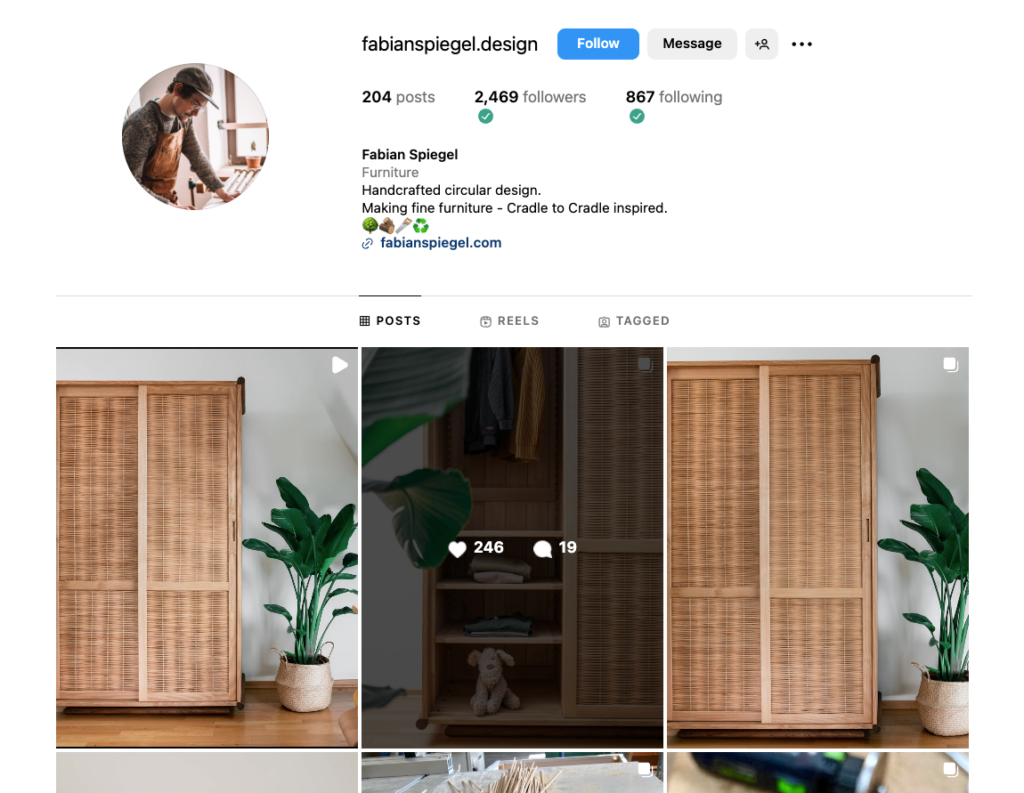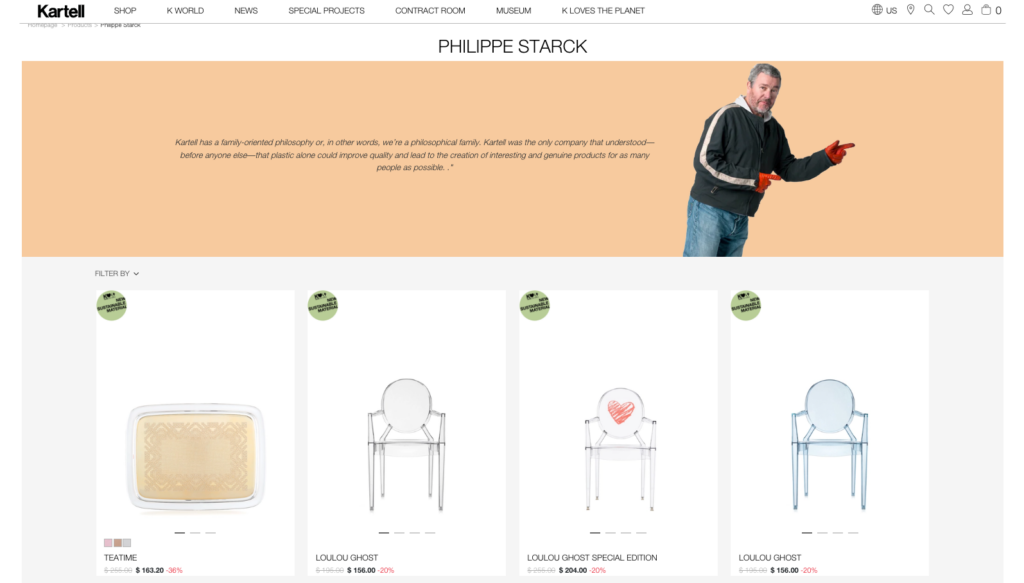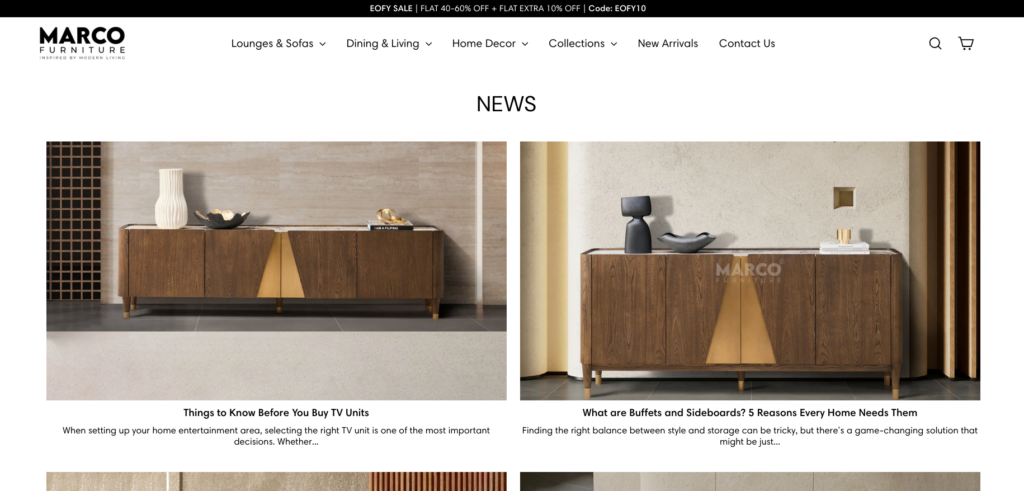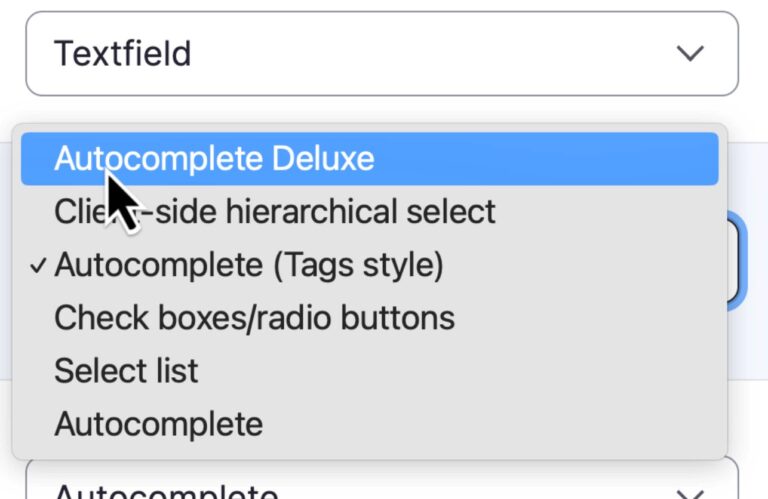Jun 13, 2025
Jordana A.
13min Read

Selling furniture online is a smart and cost-effective way to start your own business and reach customers no matter where they are. To get started, you’ll need to choose a business model, set up legal and financial foundations, source inventory, build an online store, market your products, fulfill orders, and handle customer service.
The furniture market looks promising, so now’s the perfect time to jump in. According to Statista, it’s expected to generate $799.46 billion in revenue worldwide in 2025, growing at about 3.73% every year.
What’s in it for you? You get to work from anywhere, connect with more buyers, and grow your brand without the big costs of a physical store. Plus, people always need furniture for their homes and offices, so demand stays steady.
This guide will guide you through each step so you can start your furniture business with confidence. You’ll get tips, strategies, and tool recommendations to help you succeed online.
Choosing the right furniture business model
First things first, let’s brainstorm what kind of furniture you want to sell and who your target audience is. We’ll help you choose the right business model and define your niche, so you can build a strong foundation for your brand.
Furniture business models explained: maker, designer, reseller, and more
The best furniture business model is the one that fits your starting budget, available logistics, and potential customers. Here are the most common furniture business models and their pros and cons.
Furniture maker
If you have a knack for carpentry and the resources to make furniture yourself, this is just the model for you. You get full control over your products, allowing you to offer custom pieces or keep an exclusive lineup ‒ just like Fabian Spiegel (@fabianspiegel.design on Instagram) does with their handcrafted furniture.

Unique furniture usually sells for more since it’s one of a kind. With the right production flow and marketing strategies, you can drive demand and earn good money.
The downside is that you’ll have to find and buy your own materials, track inventory, and handle shipping all on your own. Balancing making furniture and growing your business can be difficult since both take a lot of time and effort.
Furniture designer
This business model suits those who just want to focus on design. You create the designs and choose the materials, then work with builders or manufacturers to bring your vision to life.
Philippe Starck (www.starck.com), the well-known French architect and designer, is one of the big names using this model. He handles the design and teams up with manufacturers like Kartell and Alessi, who take care of production and shipping.

Exceptional design skills and knowledge of materials are essential, but so are strong communication and project management. Much of your business relies on others’ expertise, so networking with the right suppliers, builders, manufacturers is key to success.
That said, relying on others means you have less control over production quality and timelines. Delays or mistakes by manufacturers can impact your reputation. Also, profit margins might be lower since you’re sharing revenue with production partners.
Reseller
Can’t design or build your own furniture? You can still start a furniture business by selling other people’s products and curating them into a unique, attractive collection.
For this model, the easiest way to source products is by buying directly from brands and manufacturers. For vintage furniture, it’s more hands-on ‒ shopping at flea markets or attending auctions ‒ and usually requires space to store inventory.
Creativity is a key skill that can make or break your business. Whether you’re spotting the latest trends or finding hidden gems from lesser-known furniture makers, having a good eye for what will sell can make all the difference. That’s why many resellers also work as furniture consultants.
For example, ducknest (ducknest.com.au) offers personalized consultations to help clients choose curated European furniture packages. They carefully choose luxury pieces from exclusive brands and guide customers through delivery, installation, and styling. This approach makes it easier for clients to get a cohesive, high-quality furniture setup without the hassle of managing every detail themselves.

Dropshipper
This model is similar to reselling but without the hassle of managing inventory or shipping. You partner with manufacturers who handle all the logistics, so you can focus on marketing and selling the products.
Dropshipping is popular because it has low startup costs and less risk, making it great for new entrepreneurs. However, just like with designers and resellers, if your partners don’t keep quality high or fail to fulfill orders on time, it can damage your brand.
How to define your furniture niche and product focus
There are different styles of furniture to tap into, but specializing in one niche can make your business unique. A niche focuses your efforts on a specific group of customers and makes your marketing more effective. Plus, it’s easier to become known as an expert in your niche, which builds trust and loyalty.
Picking a niche that aligns with your brand, expertise, and passion helps keep motivation high and builds credibility. For profitability, the ideal niche should have steady or growing customer interest and long-term appeal. Thriving in a niche with less competition might seem easier, but it could also mean the customer base is too small to sustain your business.
Also, consider pricing and costs to make sure the niche is financially viable. Some niches have high profit margins but expensive materials, while others are only popular in certain areas. You can answer these questions through market research.
Here are some profitable furniture niches to consider:
- Eco-friendly furniture. Caters to the rising demand for environmentally friendly options made from recycled or renewable materials.
- Small-space or multi-functional furniture. Perfect for people living in apartments or tiny homes who need space-saving solutions.
- Luxury and designer furniture. Targets buyers looking for high-end, exclusive pieces.
- Antique furniture. Popular among collectors and people who love classic styles.
- Office furniture. As more people split time between home and the office, the need for stylish, ergonomic furniture that fits both environments is growing.
- Outdoor furniture. For customers who want to create cozy outdoor living spaces.
Building a strong furniture brand identity and trademark basics
Your brand identity is how customers recognize and remember your furniture business. It includes your business name, logo, colors, style, and the overall feeling your brand gives. Just like having a niche, a strong brand helps you stand out and build loyal customers.
To protect your brand, consider registering a trademark. Whether you design, build, resell, or dropship furniture, a trademark lets you legally stop others from copying your name or logo. It adds value to your business if you ever want to sell or grow, while also building customer confidence by showing you’re professional and trustworthy.
Laying the legal and financial foundations
Registering a trademark is just the start of protecting your furniture business. Avoid legal and financial issues by taking other important steps to make your business official and run it smoothly.
While the exact steps depend on your business model and the type of furniture you sell, here are the basics that apply to most cases:
- Register a business name. The process varies by country or state, but it basically means letting local authorities know you’re running a business. In the U.S., this is usually done through the Secretary of State office or a county clerk’s office.
- Decide on a business structure. Common types include sole proprietorship, partnership, LLC, and corporation. Many small furniture sellers start as sole proprietors because it’s simple and affordable. As your business grows, switching to an LLC can offer better personal liability protection and tax benefits.
- Obtain necessary permits or licenses. This depends on your location and the type of furniture business. For example, selling used or antique furniture usually requires a secondhand dealer’s license or resale permit, while manufacturing might need health and safety inspections.
- Set up insurance. It covers unexpected losses from shipping damage, workplace accidents, or product defects ‒ giving you and your customers peace of mind.
- Open a separate business bank account. Keeping business funds separate from personal accounts helps you stay organized, makes taxes easier, and builds trust with suppliers and customers. In many countries, it’s also legally required for registered businesses.
- Explore financing options. Whether it’s a small loan, credit from suppliers, or investors who believe in your idea, having the right funding is essential for starting and growing your business.
Calculating margins and setting competitive prices
When pricing your furniture, a general rule of thumb is to aim for a markup of 2.5 to 2.75 times the production or wholesale cost for new furniture. Used furniture is typically priced at 70-80% of its original sale price, depending on its condition, age, and demand.
For antique furniture, pricing can be trickier, as factors like rarity, condition, and historical significance can impact the value. In this case, it’s best to consult a professional appraiser to determine an accurate price.
Here are the factors to consider for your pricing strategy:
- Materials. The higher the quality and rarity, the more it’ll cost to source them.
- Time and labor. If you make the furniture yourself, don’t forget to account for the time it takes to create each piece.
- Overhead costs. Include business expenses like rent, utilities, marketing, and shipping.
- Condition and age. This is especially important for used and antique furniture. How well an item has been maintained or restored can affect its price.
- Shipping and logistics. Consider how shipping and handling costs factor into your pricing, especially for bulky or fragile items.
- Competition. Check what similar items are selling for. Find a price that covers your costs while staying competitive.
- Market demand. Research which products are in demand within your niche so that your prices reflect what buyers are willing to pay.
How to source and manage your furniture inventory
Whether you’re creating furniture pieces yourself, working with manufacturers, reselling, or dropshipping, having a solid plan for finding products and keeping track of stock is a must. Let’s explore different sourcing strategies and practical tips on managing inventory and storage.
Effective furniture sourcing strategies for designers, resellers, and dropshippers
Where and how you get your furniture depends on your business model.
If you’re making your own products, sourcing means finding quality materials like wood, fabric, or hardware. Designers work with manufacturers to bring designs to life. Resellers buy from brands, manufacturers, or find unique pieces at auctions or flea markets, while dropshippers rely on suppliers to handle inventory and shipping.
Follow our tips to find reliable suppliers and quality products:
- Research and network. Start by researching online directories, trade shows, and industry events. Networking with other furniture sellers or joining industry groups can help you find trusted contacts. Don’t forget to consider local manufacturers or artisans for unique pieces.
- Use sourcing platforms. Retailers like Alibaba, ThomasNet, and Global Sources connect you with manufacturers worldwide. For dropshipping, platforms like Oberlo or Spocket let you easily list products and manage orders from your online store.
- Negotiate terms. Build good relationships with suppliers to get better prices and terms. Be clear about order volume, payment terms, and quality expectations. Don’t be afraid to ask for discounts or flexible shipping, especially for bulk orders.
- Vet quality thoroughly. Always request samples before placing large orders and inspect the materials, craftsmanship, and packaging. For eco-friendly or premium items, ask for certifications or references.
Practical inventory and storage solutions for furniture sellers
No matter your business model, managing your inventory well is key to keeping things running smoothly. Tracking stock levels, sales, and restocks prevents overselling and lost sales.
Doing this manually is possible, but many inventory management tools can make the process easier and more accurate. Tools like Zoho Inventory and inFlow provide real-time stock updates, generate useful reports, and even predict when you’ll need to reorder, helping you avoid delays and keeping customers happy.
Storage is as important as inventory management. Furniture takes up space, so whether you’re buying or renting a storage area, keeping it organized protects your products and makes them easier to find when it’s time to ship or sell.
When setting up your storage, think about the size and weight of your furniture, how easy it is to access everything, and conditions like humidity control to protect materials like wood or fabric. Good storage practices save time and reduce the risk of damage or loss.
Did you know?
Hostinger’s ecommerce website builder comes with inventory tracking, updating stock levels automatically whenever there’s a purchase or someone cancels an order.
How to build a successful online furniture storefront
After laying the groundwork, follow these steps to create your online furniture store:
- Choose your domain name and register it. Pick a name that’s easy to remember and matches your brand.
- Set up your hosting and website platform. The hosting provider stores your website’s data, while the platform provides the tools for designing and managing your store’s layout, products, and transactions.
- Add your products. Upload clear product photos, write detailed descriptions, and set prices.
- Organize your product categories. This is especially important for furniture businesses with a large catalog. Clear, intuitive categories allow visitors to find products quickly, improving their shopping experience and encourage purchases.
- Set up payment and shipping options. Offer payment methods your audience uses and clear shipping details.
- Create essential pages. Include About, Contact, FAQ, and Privacy Policy pages to build trust.
- Test your store. Make sure everything works properly throughout the customer journey, from browsing to checkout.
- Launch your store and start marketing. Start promoting your online store through social media, email marketing, and other marketing strategies to drive traffic to your site.
Keep in mind that the exact steps might vary depending on the platform you choose. For example, with Hostinger, purchasing an annual hosting plan includes a free domain name for the first year. This means Step 1 (registering your domain) happens at the same time as Step 2 (setting up your hosting account).

Best ecommerce platforms for selling furniture online
The key to creating an online store by yourself is choosing the right platform. While many options are available, we’re focusing on platforms that give you the freedom to fully manage and customize your store, leaving out marketplaces like Amazon and Etsy.
Here are the five best ecommerce platforms for building your furniture store, along with comparisons to help you weigh the pros and cons:
| Platform | Scalability | Ease of use | Pricing |
| Hostinger Website Builder | Offers multiple hosting options for scaling performance, but third-party integrations are still limited | Extremely user-friendly with AI onboarding, a drag-and-drop editor, and 24/7 support | Starts from $3.99/month |
| WooCommerce | Highly scalable and customizable with plugins and themes | Requires basic knowledge of WordPress, need to set up your own web hosting and domain name | Free |
| Shopify | Provides tools for omnichannel selling, though access depends on the chosen plan | Easy to set up and customize with built-in tools and apps, plus 24/7 support for troubleshooting | Starts from $19/month |
| BigCommerce | Great scalability, built for large businesses with complex needs | Requires at least basic website-building experience to fully leverage its advanced tools | Starts from $29/month |
| Squarespace | Scalable for small to medium businesses, with custom website solutions for growth | Offers drag-and-drop functionality but lacks auto-save | Starts from $23/month to access ecommerce tools |
Designing and theming your online furniture store for maximum impact
Learning how to build an online furniture storefront involves planning the design. A well-designed store not only looks great but also enhances the user experience and builds trust.
Focus on these key points to make your store’s design impactful:
- Aesthetics and usability. Use clear calls to action and high-quality product images to capture attention, but remember to optimize all visuals so they don’t slow down your site. Include a search bar and a simple menu to improve navigation, allowing customers to quickly find what they’re looking for.
- Color psychology. Colors can influence emotions and buying decisions. For furniture stores, neutral tones like beige or gray create a sense of comfort and elegance, while vibrant colors can add energy to special promotions or specific sections. Once you’ve chosen your color palette, keep it consistent throughout the store to reinforce your brand identity.
- Layout. Avoid overcrowding your pages with too many products or details. Instead, use whitespace to give each item room to stand out and make your site feel more inviting. Choose a responsive design for a smooth experience on any device.
- Accessibility. Make sure your website is accessible to all users, including those with disabilities. Pick readable fonts with high contrast against the background, and include alt text for images to accommodate customers using screen readers.
Marketing strategies to drive online furniture sales
Offering quality furniture on a well-designed online store won’t do you much good unless people know about it. You’ll need to use a mix of ecommerce marketing strategies across different channels to spread the word.
Implementing search engine optimization (SEO) practices will help your store appear in search results, allowing people to easily find your products. Combine SEO with social media, email marketing, and paid ads to keep customers engaged with updates, promotions, and new launches.

Consider adding ecommerce content marketing to enhance your SEO. Helpful content like product guides, decorating tips, or customer reviews boost SEO, establish credibility, and build trust with your audience. Segment your customers by factors like shopping behavior or location to make your marketing efforts more personalized and relevant.

As you plan, don’t forget to set clear goals and manage your ecommerce marketing budget. Whether it’s on ads, content, or other channels, track what’s working so you can fine-tune your efforts.
Did you know?
Hostinger makes starting a newsletter campaign easy with Reach, our new AI-powered email marketing tool.
Fulfilling orders and shipping furniture
The last step to making your furniture business a success is figuring out how to fulfill orders and ship your products. In this section, we’ll go over tips for planning your fulfillment, setting up efficient shipping, handling returns, and keeping your customers happy with great service.
Figuring out your fulfillment strategy
To make sure your furniture orders get to customers smoothly, you need a solid fulfillment plan that balances cost, speed, and safety for your products.
Decide whether you want to handle fulfillment yourself or use a third-party logistics (3PL) service. Doing it yourself means you’ll need storage space, packing materials, and time. With 3PL, you save time but pay more for the service.
Also, consider the size and fragility of your furniture. Larger or fragile items need special packaging ‒ foam padding, sturdy boxes, or corner protectors ‒ for protection during transit. For larger items, consider custom crating to prevent damage during long-distance shipping.
Proper packaging not only protects your products but also boosts your brand’s reputation for quality.
Setting up efficient furniture shipping and delivery
There are many shipping carriers available, but it’s best to go with those that specialize in furniture or large items. These carriers know how to handle, load, and transport furniture properly, making deliveries faster and more reliable. Make sure they offer tracking capabilities so both you and your customers can monitor shipments.
Offering different delivery options, like standard, expedited, or white-glove delivery (where furniture is assembled in the customer’s home), gives your customers flexibility. However, be careful with faster delivery services, as they can cost extra. Make sure you have a pricing strategy that works for both your business and your customers.
If your order volume grows, negotiate bulk shipping rates with carriers. Many offer discounts for businesses that ship regularly, so it’s worth building a strong relationship with your carrier to get better rates.
Did you know?
With Hostinger Website Builder, you can set unlimited shipping zones and offer up to 25 options per zone. This flexibility lets you tailor shipping strategies by region, speed, and price, helping you serve customers globally while managing costs.
Handling returns and customer service to keep furniture buyers happy
No matter how carefully your furniture is packed, returns are sometimes inevitable. The key to keeping your customers happy, even when they don’t keep their purchase, is handling returns efficiently and transparently.
Start by creating a clear, easy-to-find return policy page on your store. Let customers know what they can return, how long they have to do so, and who covers the shipping costs. Being upfront about this builds trust and confidence in customers’ purchase.
Customers often need assistance with returns, so good customer service is essential. Respond quickly to questions or concerns and make the return process as easy as possible. Consider adding live chat for instant answers or an FAQ section to help customers resolve issues on their own.
To improve ecommerce customer experience, follow up with customers after they receive their products. Send them care tips or helpful advice for maintaining their furniture. This post-purchase engagement completes their buying experience, boosts loyalty, and shows you genuinely care about their satisfaction.
Exploring the future of selling furniture online
By reading this article, you’re already considering the idea of selling furniture online. Why not take the leap and start today?
Fortune Business Insights predicts strong growth for the furniture market in the coming decade. Rising housing sales are encouraging people to furnish their homes, while the trend of working from home is driving demand for work tables and chairs.
As we mentioned earlier, there are various ways to sell furniture without having to make it yourself. The demand for used furniture, especially among the middle class, is growing. You could also explore opportunities as a seller or dropshipper, partnering with manufacturers who specialize in sustainable materials like wood and recycled plastic.
If the technical side of building an online store feels intimidating, Hostinger is ready to help. We handle the behind-the-scenes details, giving you more time to focus on what matters most ‒ growing your business.
How to sell furniture online – FAQs
What is the best site to sell furniture?
Marketplaces like Amazon and Etsy are the easiest options for selling furniture as they provide everything you need to start. However, they have limited flexibility for branding and marketing. For more control over your store’s look and feel, it’s best to build your own website.
What is the best online platform for selling furniture?
Hostinger Website Builder is an excellent choice for non-technical users looking to sell furniture online. It’s user-friendly and offers features like marketing tool integrations, inventory management, AI tools, and 24/7 support. Hostinger also supports over 100 payment methods and charges 0% transaction fees, giving you full control over your sales while keeping costs low.
How to be safe when selling furniture online?
Protect your online furniture business by trademarking your brand name and logo, and obtaining the right permits or licenses. For secure transactions, choose a platform with strong security measures, like Hostinger, and trusted payment gateways. To ensure accountability, use tracking and delivery confirmation for shipments, and be transparent with return policies and data privacy.
All of the tutorial content on this website is subject to
Hostinger’s rigorous editorial standards and values.






